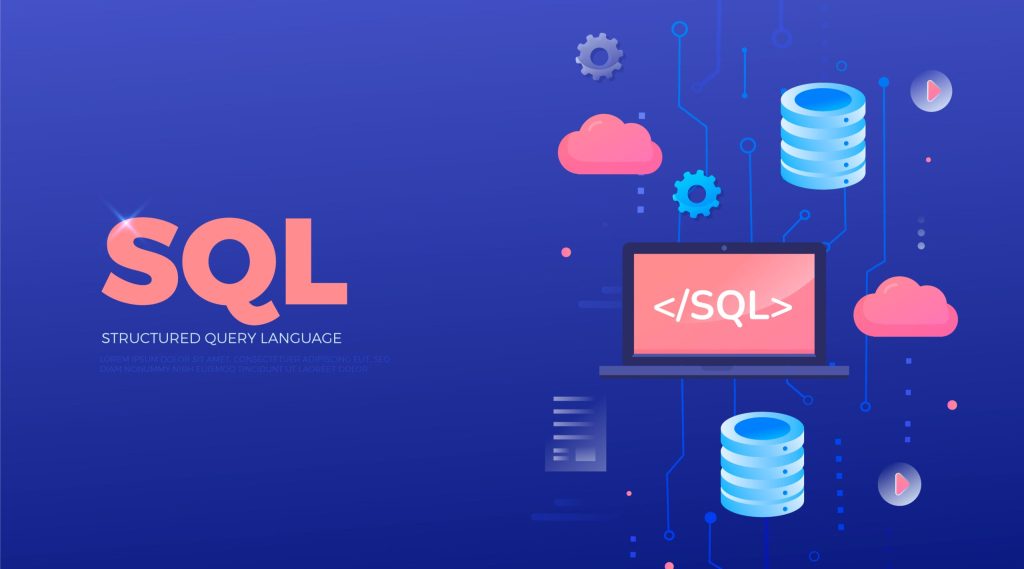Structured Query Language, commonly known as SQL, is the standard language used to manage and manipulate relational databases. Whether you are a web developer, data analyst, or software engineer, understanding SQL is one of the most valuable skills you can learn.
SQL helps you store, retrieve, and analyze data efficiently the foundation of almost every web or business application today.
Table of Contents
What is SQL?
SQL stands for Structured Query Language. It’s a programming language designed specifically for managing data stored in relational databases such as MySQL, PostgreSQL, SQL Server, and Oracle.
With it, you can create databases, define relationships, insert or update records, and run queries to extract meaningful insights from data.
Why Learn it?
SQL is one of the most in-demand technical skills across industries. Learning it not only helps you understand how data works but also enables you to interact directly with databases used in applications, websites, and analytics tools.
Here are some key reasons why SQL is worth learning:
• It’s the backbone of all data-related operations
• It’s required for jobs in data science, web development, and analytics
• It integrates easily with languages like Python and JavaScript
• It helps make better data-driven decisions
Understanding Databases and Tables
A database is a structured collection of data. Each database contains tables, and each table consists of rows (records) and columns (fields).
For example, an “Employees” table might include columns such as id, name, department, and salary. Each row represents one employee’s data.
Basic Commands
SQL consists of several commands grouped into categories like Data Definition Language (DDL), Data Manipulation Language (DML), and Data Query Language (DQL).
1. Creating a Database
CREATE DATABASE company;
This command creates a new database named company.
2. Creating a Table
CREATE TABLE employees (
id INT PRIMARY KEY,
name VARCHAR(100),
department VARCHAR(50),
salary DECIMAL(10,2)
);
This creates a table named employees with columns for ID, name, department, and salary.
3. Inserting Data
INSERT INTO employees (id, name, department, salary)
VALUES (1, 'John Doe', 'HR', 50000.00);
This command adds a new record to the table.
4. Retrieving Data
SELECT * FROM employees;
The SELECT statement retrieves all rows from the employees table.
5. Filtering Data with WHERE
SELECT * FROM employees WHERE department = 'IT';
This retrieves employees who belong to the IT department.
6. Updating Records
UPDATE employees SET salary = 55000 WHERE id = 1;
This increases the salary of the employee with ID 1.
7. Deleting Data
DELETE FROM employees WHERE id = 1;
This removes the employee record with ID 1.
8. Sorting and Limiting Data
SELECT * FROM employees ORDER BY salary DESC LIMIT 5;
This retrieves the top 5 highest-paid employees.
Understanding Joins
SQL joins are used to combine rows from two or more tables based on a related column.
• INNER JOIN returns records with matching values in both tables.
• LEFT JOIN returns all records from the left table and matching records from the right.
• RIGHT JOIN returns all records from the right table and matching records from the left.
• FULL JOIN returns all records when there is a match in either table.
Example:
SELECT employees.name, departments.department_name
FROM employees
INNER JOIN departments
ON employees.department = departments.id;
Aggregate Functions
Aggregate functions perform calculations on data, such as counting, summing, or averaging.
Examples include:
• COUNT() – counts total rows
• SUM() – calculates total values
• AVG() – finds the average value
• MAX() – gets the maximum value
• MIN() – gets the minimum value
Example:
SELECT department, AVG(salary) AS avg_salary
FROM employees
GROUP BY department;
This calculates the average salary for each department.
Best Practices for Writing Queries
• Always use meaningful table and column names
• Use proper indentation for readability
• Use aliases (AS) for shorter names in long queries
• Avoid using SELECT * in production to improve performance
• Regularly back up your database
• Secure sensitive data with proper access control
Applications in the Real World
SQL is widely used in:
• Web development – managing user accounts, content, and transactions
• Data analysis – querying and summarizing large datasets
• Machine learning – extracting clean data for training models
• Business intelligence – generating reports and visualizations
Useful Resources and Backlinks
To strengthen your understanding of it, explore these trusted resources:
• W3Schools Tutorial
• Bolt Interactive Lessons
• Kaggle Exercises
Final Thoughts
Learning SQL is one of the most valuable investments you can make in your tech career. It’s a universal language for managing data that underpins nearly every digital product or service.
Start by mastering simple queries and gradually move to advanced topics like joins, subqueries, and stored procedures. With consistent practice, you’ll soon be able to handle complex databases confidently and use SQL to uncover powerful insights from data.




1 thought on “SQL – Master the Language of Databases – 2025”